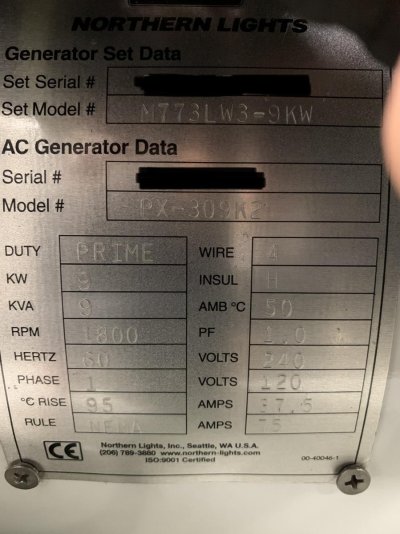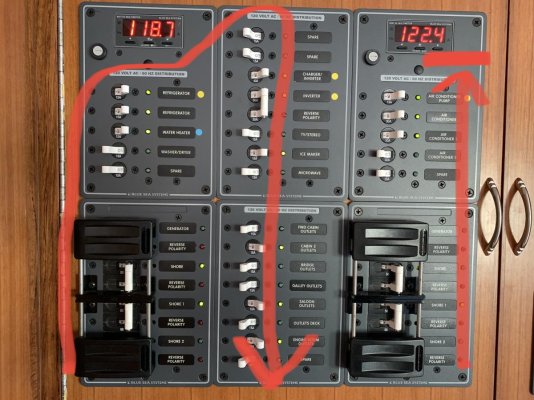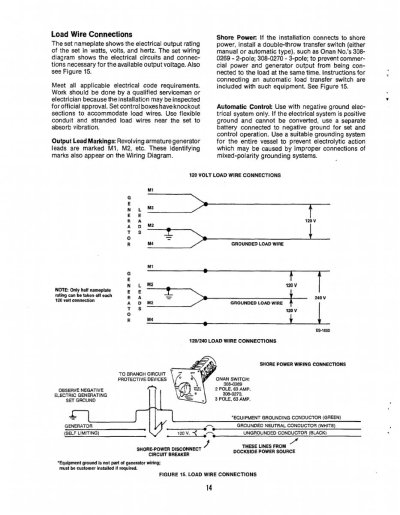westmarine
Member
I have a 9kw Northern Lights gen. 240V that splits off to two sides of 120V. I do not have any 240V items on the boat and no breakers for 240v. The shore power is the same. 240v 50a that splits into two 120V isolated breaker boards. As you can see, each 120V leg is switched independently. I have 3 air conditioner units on the right side and everything else on the left!
In the winter, I don’t use the air conditioners, but water heater, charger, all the house stuff, is all on the left phase! If I load up one phase or side and have 0 load on the other, is this harmful or sub optimal? What about just leaving one phase off?
Thanks!
In the winter, I don’t use the air conditioners, but water heater, charger, all the house stuff, is all on the left phase! If I load up one phase or side and have 0 load on the other, is this harmful or sub optimal? What about just leaving one phase off?
Thanks!



